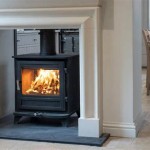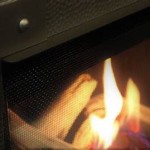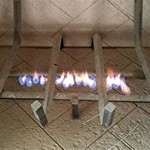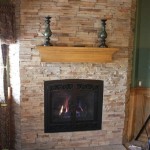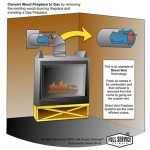Removing a Gas Fireplace: A Comprehensive Guide
Removing a gas fireplace is a significant undertaking that requires careful planning, adherence to safety protocols, and a clear understanding of the components involved. This article provides a detailed, step-by-step guide to safely and effectively removing a gas fireplace, emphasizing the importance of professional consultation and adherence to local building codes and regulations.
Before initiating any removal work, it is paramount to assess the current fireplace setup. This includes identifying the gas line connection, the venting system configuration, and any structural supports integrated into the surrounding wall or floor. A thorough assessment will inform the removal strategy and ensure that all necessary tools and safety equipment are readily available.
Safety is the single most important consideration when dealing with natural gas. Any mishandling can lead to dangerous leaks or explosions. Therefore, engaging a qualified, licensed gas technician is not just recommended; it is essential. This professional can safely disconnect the gas supply and cap the gas line, preventing any potential hazards during the removal process. They can also inspect the gas line for any existing leaks or damage, allowing for immediate rectification.
Furthermore, local building codes often dictate specific requirements for gas line capping and fireplace removal. Obtaining the relevant permits beforehand can prevent costly fines and delays. Ignorance of these regulations is not an acceptable excuse and can lead to significant legal and financial repercussions.
After confirming the gas line has been safely disconnected and capped by a professional and all necessary permits are in place, the physical removal process can commence. This process typically involves disassembling the fireplace unit and carefully dismantling the surrounding structure. The specific steps involved will vary depending on the type of gas fireplace and the way it was originally installed.
Key Point 1: Prioritizing Safety and Professional Consultation
The primary focus throughout the entire removal process must be safety. Natural gas is a highly flammable substance, and any error in handling it can have severe consequences. Therefore, engaging a qualified, licensed gas technician to disconnect and cap the gas line is not merely a suggestion; it is a critical safety precaution. This professional has the expertise and equipment to safely manage the gas supply and mitigate any potential risks associated with gas leaks or explosions.
Beyond the gas line disconnection, consulting with a structural engineer or contractor may be necessary, particularly if the fireplace is integrated into a load-bearing wall or if the venting system is complex. Their assessment can identify any structural implications and ensure that the removal process does not compromise the integrity of the building. This consultation can also help determine the most efficient and safe method for dismantling the fireplace and its surrounding structure.
Moreover, it is crucial to thoroughly inspect the area surrounding the fireplace for any potential hazards, such as asbestos-containing materials. Older fireplaces may have been constructed using asbestos-containing insulation or fireproofing. If asbestos is suspected, it is imperative to engage a certified asbestos abatement professional to safely remove and dispose of the material. Improper handling of asbestos can pose a serious health risk.
Ensuring all these precautions are taken during planning is crucial to protect yourself and others from potential harm. Always err on the side of caution and seek professional guidance whenever uncertainty arises.
Key Point 2: Understanding the Removal Process and Associated Costs
The removal process itself can be broken down into several key stages: disconnection, dismantling, and disposal. Disconnection involves safely disconnecting the gas line and any electrical connections to the fireplace unit. Dismantling involves carefully removing the fireplace unit, the surrounding mantel, and any other associated structures. Disposal involves properly disposing of the fireplace unit, the construction debris, and any hazardous materials according to local regulations.
The cost of removing a gas fireplace can vary widely depending on several factors, including the complexity of the installation, the type of fireplace, the location of the property, and the cost of labor in the area. Key cost considerations include the gas technician’s fees, permit fees, demolition costs, disposal fees, and any necessary repairs to the surrounding wall or floor after removing the fireplace.
Obtaining multiple quotes from qualified contractors is a prudent step in managing the overall expense. These quotes should clearly outline the scope of work, including all labor, materials, and disposal fees. It is essential to carefully review each quote and ensure that all necessary tasks are included to avoid unexpected costs later on.
Budgeting for unforeseen issues is also a vital aspect of the planning stage. Hidden structural damage, asbestos abatement, or unexpected complications during the dismantling process can all contribute to increased costs. Having a contingency fund in place can help mitigate the financial impact of these unforeseen issues.
Key Point 3: Addressing Post-Removal Considerations and Restoration
After the gas fireplace has been successfully removed, the focus shifts to addressing the remaining space and any necessary restoration work. This may involve repairing the wall or floor, capping the gas line, and addressing the venting system. The extent of the restoration work will depend on the original installation and the desired aesthetic of the space.
Repairing the wall or floor is often necessary to address any gaps or damage left by the fireplace. This may involve patching drywall, replacing flooring, or repainting the surrounding area. The goal is to seamlessly integrate the restored space with the existing décor and ensure a visually appealing result.
The capped gas line should be properly inspected and sealed to prevent any potential leaks. This is another step best performed by a licensed gas technician. Furthermore, the venting system may need to be capped or removed, depending on local building codes and the future plans for the space. Removing the venting system can free up additional space and improve the overall aesthetics of the room.
Finally, consider the potential uses for the newly available space. This may involve installing a new appliance, creating a storage area, or simply leaving the space open. Planning for the future use of the space can inform the restoration process and ensure that the final result meets your specific needs and preferences.
The process of removing a gas fireplace, while seemingly straightforward, involves navigating potential hazards, adhering to regulations, and addressing structural considerations. Diligence in planning, professional consultation, and meticulous execution are crucial for a successful and safe outcome. Thorough research and careful consideration of the long-term implications will contribute to a positive and rewarding home improvement experience.
Furthermore, it's important to document the entire process with photographs and detailed notes. This documentation can be invaluable for future reference, especially if any issues arise down the line. It can also be helpful when selling the property, as it provides a record of the work that was completed and the professionals who were involved.
Ultimately, removing a gas fireplace requires a proactive and informed approach. By prioritizing safety, consulting with professionals, and carefully planning each step, homeowners can successfully complete this project and create a safer, more functional living space.

How Much Does Gas Fire Removal Cost In 2024 Checkatrade

Removing A Gas Fireplace Concord Carpenter

Remove A Gas Fireplace Merrypad

Do You Want To Replace Your Gas Fire With A Woodburner

My Ugly Outdated Corner Fireplace Gets Demolished One Hundred Dollars A Month

Do You Want To Replace Your Gas Fire With A Woodburner

2024 Fireplace Chimney Removal Cost Stack T Demolition

Removing Gas Fireplace And Replacing With Log Burner Mumsnet

How Much Maintenance Does A Gas Fireplace Need

Remove A Gas Fireplace Merrypad
Related Posts


